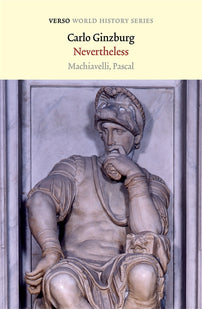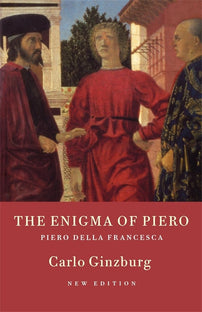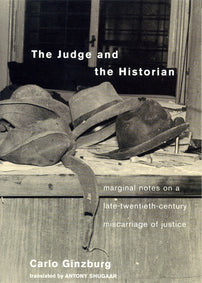Carlo Ginzburg: ‘In history as in cinema, every close-up implies an off-screen scene’
The Italian historian Carlo Ginzburg discusses the historical method of microhistory, of which he is an eminent representative, and some themes and concepts of his work.

This interview was originally published in Le Monde des livres on 3 October 2022.
Nicolas Weill, interview with Carlo Ginzburg
Carlo Ginzburg, born 1939, who taught at the École Normale Supérieure in Pisa, at the University of Bologna and then at the University of California at Los Angeles (UCLA), is without doubt one of the most important historians of our time. For Le Monde des livres, he looks back at some of the major trends in his work.
Your name and your work are still associated with what is called ‘microhistory’. Why is that?
Let’s start by quoting the magnificent words of the Sinologist Marcel Granet: ‘The method is the path once you have travelled it.’ Microhistory was the result of a convergence and a common discussion among a group of Italian researchers, but each one arrived at it with different experiences. For me, it was the case study. When I was ten years old, my mother [the writer Natalia Ginzburg, 1916-91] regularly brought me the books published by Einaudi. One day I came across The Film Sense by Sergei Eisenstein. I understood very little of the book’s content, but the impression it made on me was immense, even though I had not yet seen Eisenstein’s films. Then I read his text on the close-up, which became very important for me.
Working on a case in an analytical way is close to this. But, of course, you also have to take into account the off-screen, otherwise the close-up would not make sense. This implies that in any close-up the global perspective is implicit. Every singular case assumes the possibility of a generalisation, and there is a back and forth between the one and the other. In the first essay I published, ‘Witchcraft and Popular Piety’ [1961; reprinted in Clues, Myths, and the Historical Method], I noted that the trial I had analysed, notwithstanding its specificities, could be considered a paradigmatic case, even if it was an anomaly.
One of the founding fathers of microhistory, along with Siegfried Kracauer, is obviously Marc Bloch and The Royal Touch. It was this work that converted me to history. The enterprise of analysing this bizarre case, the attribution to the monarch of the gift of curing the plague or scrofula, with the aim of understanding what is evoked by the original subtitle, ‘Étude sur le caractère surnaturel attribué à la puissance royale particulièrement en France et en Angleterre’, in other words, the attitude towards the monarchy, is an extraordinary idea!
[book-strip index="1" style="buy"]In your numerous studies on the witch trials, you highlight the existence of a discourse of the dominated that escapes the theological categories forged by the inquisitors. Does this search for traces of a marginal speech link your work to the ‘subaltern studies’ that have developed starting in India?
Indeed, I have worked a lot on witchcraft. I published my book on the benandanti in 1966 [The Night Battles], then The Cheese and the Worms [the story of the trial of the Friulian miller Menocchio accused of heresy], and, in 1989, Ecstasies. Even before Ecstasies was published, I had attended, at Jacques Le Goff’s request, a colloquium between Indian and European historians in Calcutta. I was surprised by the common language between them and me.
At first, I thought this came from Marxism, but then I realised that their discourse came from Antonio Gramsci, translated into English. Later I understood that Gramsci, in order to circumvent fascist censorship, had distanced himself from the language of the Third International. That’s why he speaks, in his Prison Diaries, of ‘subaltern classes’. If he had spoken of proletarians, if he had shared the distance from the peasants cultivated in Marxism and by Marx himself, then his reception in India would have been impossible. This distancing to circumvent censorship played a major role in Gramsci’s reception. One can certainly use the notion of subaltern class in a purely Marxist perspective. But the expression also opens up to different re-readings.
You decided a long time ago to fight against neo-scepticism, ‘post-truth’ or ‘fake news’, by highlighting the importance of proof or evidence in history, in particular by discussing the theses of the American Hayden White, for whom historical science was indistinguishable from literary production. Why?
After I arrived at UCLA in 1988, Hayden White expounded in my presence his thesis that there is no rigorous distinction between a fictional and a historical narrative. White was a kind of leader, marked by this postmodern attitude towards truth and history. I then discovered that there were Italian sources for this conception. It can be found in Giovanni Gentile, the philosopher who played a fundamental role in the elaboration of the ideology of Fascism, and who argued that the distinction between res gestae (the historical process) and historia rerum gestarum (historical writing) is illegitimate, insofar as the assumption of the existence of a past outside of us, outside of the act of knowledge of that past, is merely a positivist residue. The consequence is that, even if Hayden White finds Holocaust denial unacceptable from a moral or political point of view, he cannot oppose it, so he writes, on the level of knowledge.
[book-strip index="2" style="buy"]In France, Hayden White’s theses have been strongly criticised...
Yes, but, among certain French historians, there is a discourse in favour of anachronism that includes ‘Whiteian’ elements. To this I would object, or I would point out, that one should not confuse the anachronism of the questions posed by the observer with the anachronism of the answers. Historians certainly start with anachronistic questions. But in dialogue with the categories of the actors, they correct their initial problems. Then and only then does historical knowledge become possible.
Ethnologists always start with an ethnocentric attitude, but through dialogue with their informants they reformulate their questioning. This is where the evidence comes in. For Hayden White, The Cheese and Worms was a work of fiction because it was based on a few lines in a document. This is absurd. The transcript of the trials against Menocchio found in the archives of the Friuli Inquisition comes to over two hundred printed pages! But it is true that, for him, the facts were of no importance...
Why do you use fragmentary writing in your books and articles, dividing the text into numbered sections?
I have used this technique since I started writing. In my contribution on the role of clues in historiography, medicine or the detective story [‘Clues’, in Clues, Myths, and the Historical Method], I took up a remark by Theodor Adorno according to which the decadence of systematic thought was accompanied by the rise of aphoristic thought. I was also inspired by Luigi Einaudi, a well-known economist who was president of the Italian Republic, and whose essay on imaginary money in the Middle Ages I had read, which was divided into numbered, sometimes very short, paragraphs. It made an impression on me.
Behind that, there is still Eisenstein, in other words, editing. Cinema has remained very important to me for a long time, even if at a certain point I let it go. I think that these numbered paragraphs, divided by blank spaces, give a different rhythm to the historical narrative, even if they make editors sweat. I’m obsessed with punctuation. I am interested in commas, semicolons, full stops, indents, blank spaces, including the famous blank space in A Sentimental Education, analysed by Proust in his magnificent essay ‘À propos du style de Flaubert’ [see ‘Deciphering a Blank Space’, in History, Rhetoric, and Proof].
[book-strip index="3" style="buy"]Did the fact that your mother, Natalia Ginzburg, was a novelist and translator play a role in the specific relationship that your work as a historian has with literature?
Yes, of course, my mother used to read poetry to us, and through that she passed on to me, I would say, everything that concerns my relationship with reality, since my father died when I was not yet five years old [Leone Ginzburg, 1909-44, a specialist in Russian literature, was murdered during the anti-fascist struggle]. My idea of historical narrative is linked to the books read to me as a child, when my father was assigned to internal exile in a small village near L’Aquila in Abruzzo. My mother joined him with her two children and my sister was born there. I spent the first years of my childhood there, between 1940 and 1943.
I remember a story by Luigi Capuana, a Sicilian naturalist writer of the late 19th century. He described a little girl who entered a room where there was no one. Suddenly, she saw a little man wearing a turban with a huge feather on top (there was an illustration). You turned the page and this little man, Gomitetto, became a werewolf, attacking the girl. It struck me that years later I myself started working on werewolves. In short, there is a continuity.
Translated by David Fernbach


